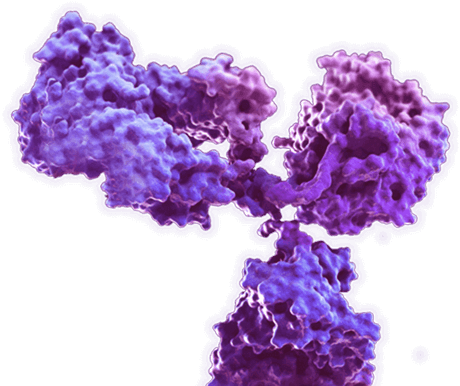AibGenesis™ Mouse Anti-APBA1 Antibody (CBMOAB-35959FYA)
Cat: CBMOAB-35959FYA

Certificate of Analysis Lookup
To download a Certificate of Analysis, please enter a lot number in the search box below. Note: Certificate of Analysis not available for kit components.
Lot Number
To download a Certificate of Analysis, please enter a lot number in the search box below. Note: Certificate of Analysis not available for kit components.
Lot Number
- Product List
- Specifications
- Application Information
- Target
Specifications
| Host species | Mouse (Mus musculus) |
| Species Reactivity | Rhesus (Macaca mulatta), Marmoset |
| Clone | MO35959FYA |
| Specificity | This antibody binds to Rhesus APBA1. |
| Format | Liquid or Lyophilized |
| Storage | Store at 4°C: short-term (1-2weeks) Store at -20°C: long-term and future use |
| Purity | > 90% was determined by SDS-PAGE |
| Purification | Purified with Protein A or G affinity chromatography |
Application Information
| Application | WB, ELISA |
| Application Notes | ELISA: 1:1000-1:3000 Other applications are to be developed. The optimal dilution should be determined by the end user. |
Target
| Introduction | The protein encoded by this gene is a member of the X11 protein family. It is a neuronal adapter protein that interacts with the Alzheimer's disease amyloid precursor protein (APP). It stabilizes APP and inhibits production of proteolytic APP fragments including the A beta peptide that is deposited in the brains of Alzheimer's disease patients. This gene product is believed to be involved in signal transduction processes. It is also regarded as a putative vesicular trafficking protein in the brain that can form a complex with the potential to couple synaptic vesicle exocytosis to neuronal cell adhesion. (From NCBI) |
| Product Overview | Mouse Anti-Rhesus APBA1 Antibody is a mouse antibody against APBA1. It can be used for APBA1 detection in Western Blot, Enzyme-Linked Immunosorbent Assay. |
| Alternative Names | APBA1 |
| UniProt ID | F6VZI8 |
| Protein Refseq | The length of the protein is 839 amino acids long. The sequence is show below: MNHLEGSAEVEVTDEAAGGEVNESVEADLEHPDVEEEQQQQPPQQQHYAGRHQRGGALEDLRAQLGQEEEERGECLERSASTESGFHNHTDTAEGDVIAAARDGYDAERAQDPEDESAYAVQYRPEAEEYTEQAEAEHAEATHRPALPNHLHFHSLEHEEAMNAAYSGYVYTHRLFHRGEDEPYAEPYADYGGLQEHVYEEIGDAPELDARDGLRLYEQEPDEAAAYRQEALGARLHHYDERSDGESDSPEKEAEFAPYPRMDSYEQEEDIDQIVAEVKQSMSSQSLDKAAEDMPEAEQDLERPPTPTGGRPDSPGLQAPAGQQRATGPAGGGEAGQRYSKEKRDAISLAIKDIKEAIEEVKTRTIRSPYTPDEPKEPIWVMRQDISPTRDCDDQRPMDGGSPSPGSSSPLGAESSGTPLHPSDPAEASTNKESRKSLASFPTYVEVPGTTGQSPRALRPLSPRALGTAELHGRSSGPGISSKLSLQILSNYSPVSMAQKLAKSRKKAPEGESQPMTEVDLFISTQRIKVLNADTQETMMDHPLRTISYIADIGNIVVLMARRRMPRSNSQENVEASHPSQDGKRQYKMICHVFESEDAQLIAQSIGQAFSVAYQEFLRANGINPEDLSQKEYSDLLNTQDMYNDDLIHFSKSENCKDVFIEKQKGEILGVVIVDRAVTVPAWALKACRQAVGPTENSVWLLLPLVLPAFVYSVCLSGHHTHCTLFMFKGLKNQSRVKLNIVRCPPVTTVLIRRPDLRYQLGFSVQNGIICSLMRGGIAERGGVRVGHRIIEINGQSVVATPHEKIVHILSNAVGEIHMKTMPAAMYRLLTAQEQPVYI. |
For Research Use Only | Not For Clinical Use.
Online Inquiry

